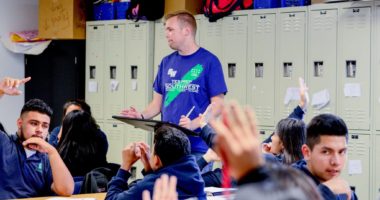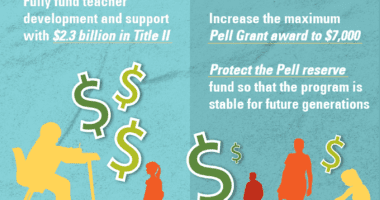Common Standards Will Allow Us to Assess What’s Working and What’s Not
Sometimes curriculum is determined by states, sometimes by districts or schools, and sometimes by individual teachers. Sometimes curriculum is driven by nationally published textbooks that are made available to teachers, sometimes by elaborate district-level scope-and-sequence guides, and sometimes by what teachers come up with over the summer.
To some extent, all of this rich stew of experimentation and innovation is part of the local control of schools that is very dear to many Americans.
But it sure does make it hard to understand what is going on.
I remember one time in the 1990s when I was approached in the playground by a bewildered parent looking to relocate his family to the Washington suburbs from Ohio. “Which are better,” he asked, as we watched my kids play, “schools in Maryland or schools in Virginia?” This was before public reporting of test scores and even before all states were participating in the National Assessment of Educational Progress. So, I told him cheerfully, “No one has any idea.”
Back then all parents could do when thinking about the schools our kids went to was to try to tap into the oral tradition of other parents. From personal experience I can say that as rich and wonderful as oral tradition can be, it can also be confusing, contradictory, and sometimes flat-out wrong.
That is one of many reasons I have long thought that having a clear set of common standards and assessments that will allow parents and local citizens to assess how their schools are doing would be a great boon.
But there’s another piece of this puzzle that needs to be put in place: One of benefits of having lots of states and school districts is that practitioners and policymakers are able to learn from all of the different ways to do things. It is for that reason, after all, that states are called “laboratories of democracy.”
But the value comes from being able to evaluate local experiments across a common measure in order to see, for example, that Alabama must be doing something pretty powerful in early reading because its fourth-graders have gone from performing in the bottom of the country to the middle of the pack. Or that Delaware’s Indian River School District has improved its reading and math proficiency even while its student population has grown poorer and more diverse.
Those facts raise the important question: What are they doing? It is in finding those answers — and spreading the expertise developed by local educators who have driven those improvements — that the field of education will be able to move forward in helping all kids learn to high levels.












